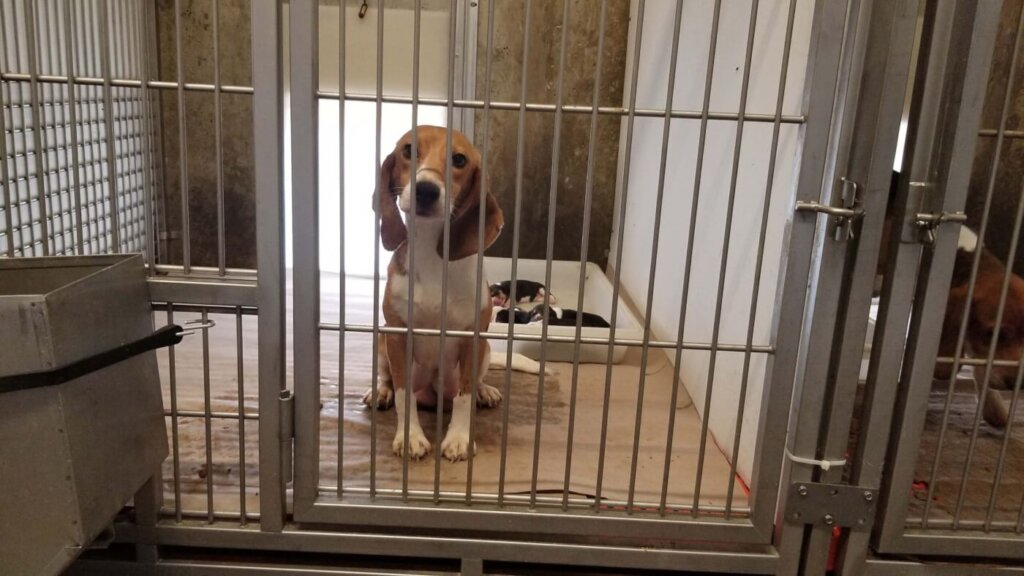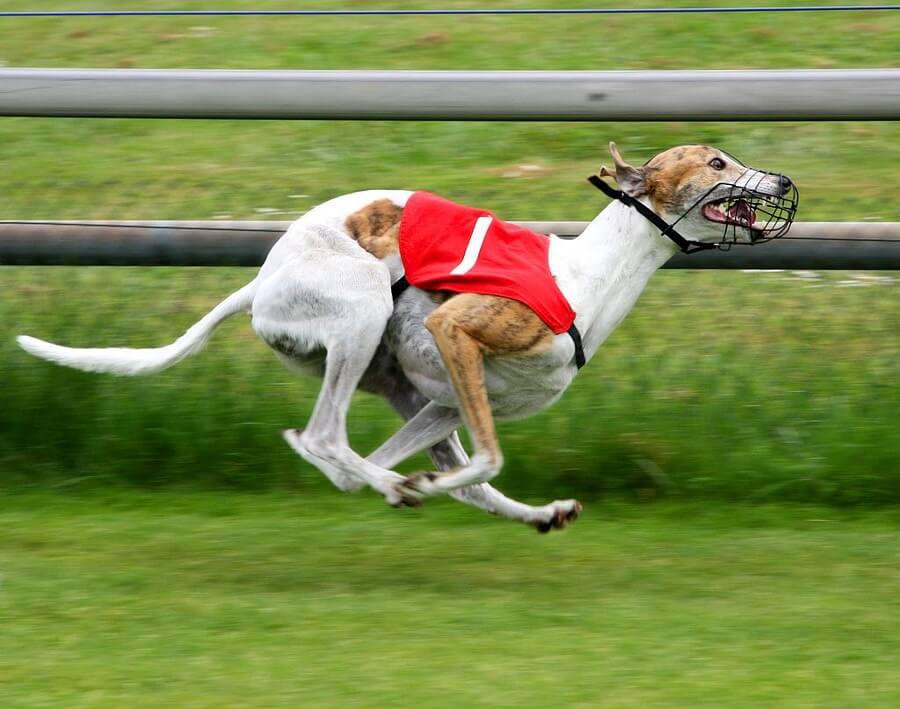
Greyhound Racing: ‘Man’s Best Friend’ Abused and Killed
Greyhounds are just like any other dog: loyal, loving, and sensitive.
Although the breed is known for running faster than any other, these dogs also love snoozing more than most and can sleep for up to 20 hours a day!
Just like the dogs we share our homes with, greyhounds are friendly and happy animals who love snuggling, tummy rubs, and being scratched behind the ears.
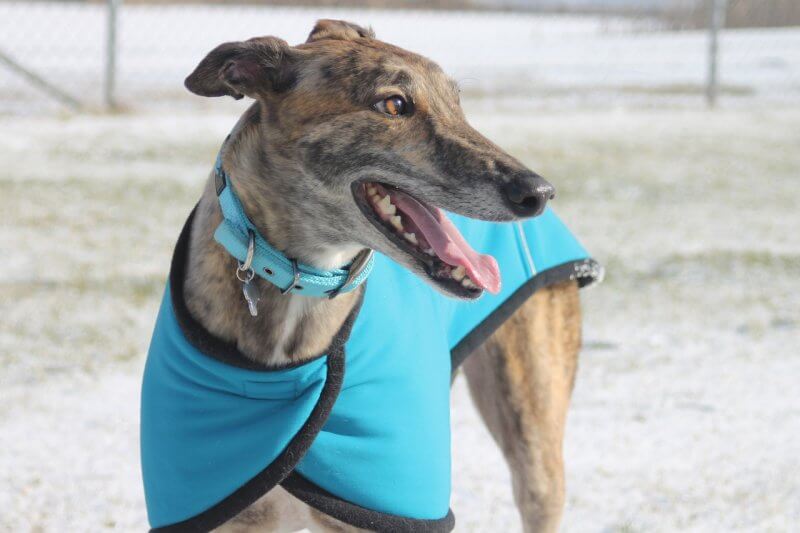
But rather than being loved and treated as “man’s best friend”, greyhounds are often grossly exploited for human entertainment.
They’re held in high esteem for their speed, agility, and strength, but unfortunately, these very qualities have condemned these animals to be victims of the racing and gambling industries.
Learn more about the problems associated with greyhound racing, and support calls for a nationwide ban.
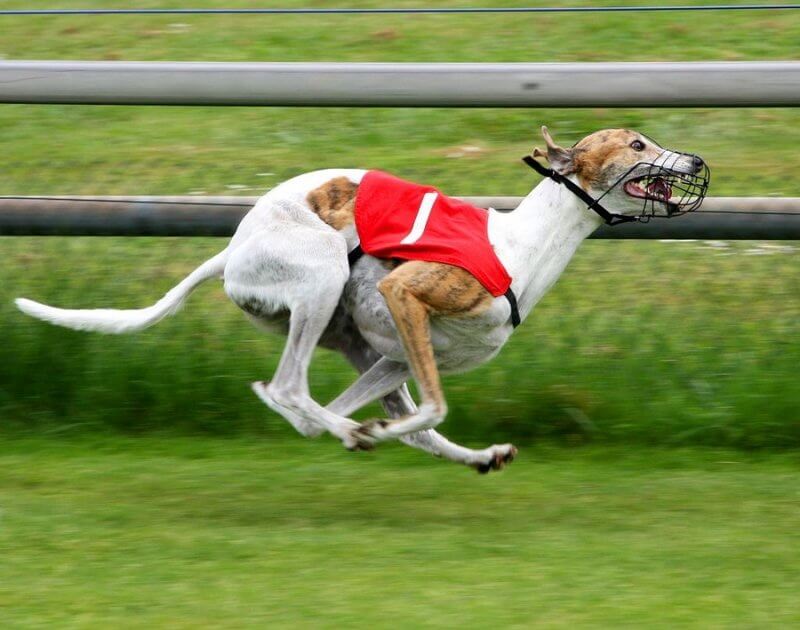
Bred to Die
Each year, an estimated 11,000 greyhounds are bred by the greyhound racing industry in Australia – but not all are deemed fast enough to win races. As a result, some 40% of those dogs (almost 4,500 animals) – termed by the industry as “initial wastage” – are killed.
The breeding process in itself presents a welfare concern. In Australia, greyhounds are bred using “surgical artificial insemination”, a highly invasive and painful procedure that’s illegal in many other countries.
In New South Wales, home to the majority of the nation’s racetracks, an estimated 80% of greyhound breeding is done via surgical artificial insemination.
Running for Their Lives
Generally, if greyhounds new to racing don’t win or place in their first six races, they’re sentenced to an early death.
Tragically, these otherwise gentle and sensitive living beings are taunted and provoked into chasing different species of “lure”. Greyhounds’ fate lies in how well they chase the lure as puppies – failing to perform can mean a death sentence.
Those dogs who do make it to the track are at significant risk of sustaining serious injuries, such as head trauma or broken hocks or legs, during training and racing. The intensity of racing also means dogs can suffer from seizures (from lack of oxygen) and cardiac arrest.
Even if treatable, these injuries and conditions often result in euthanasia, as that’s considered more “economic”.
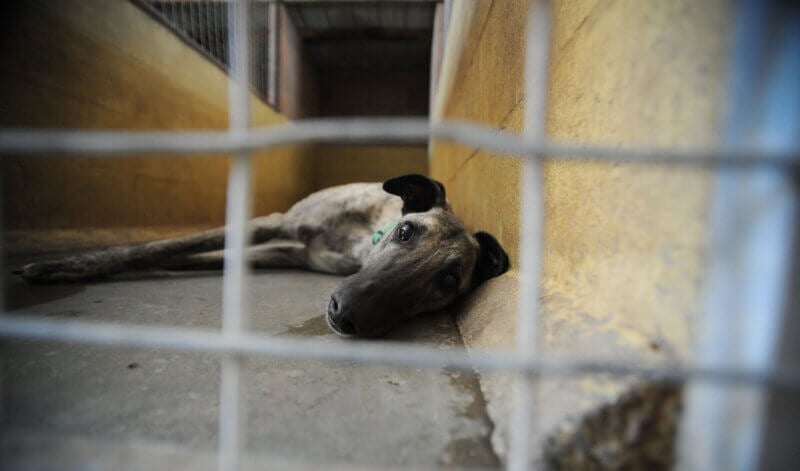
Off-Track ‘Welfare’
Greyhounds are considered “working dogs” and, as such, are treated as possessions – rather than the sensitive, loving individuals they are. To mark their “property”, owners and trainers tattoo puppies’ ears without any pain relief.
Often confined to tiny, barren pens and kennels, they’re completely deprived of human companionship and stimulation. They can be left in these sad conditions for up to 23 hours a day.
Due to the competitive nature of racing, it’s alarmingly common for trainers to ply dogs with dangerous substances such as anabolic steroids, erythropoietin, hormones, and illegal drugs such as heroin, cocaine, and amphetamines.
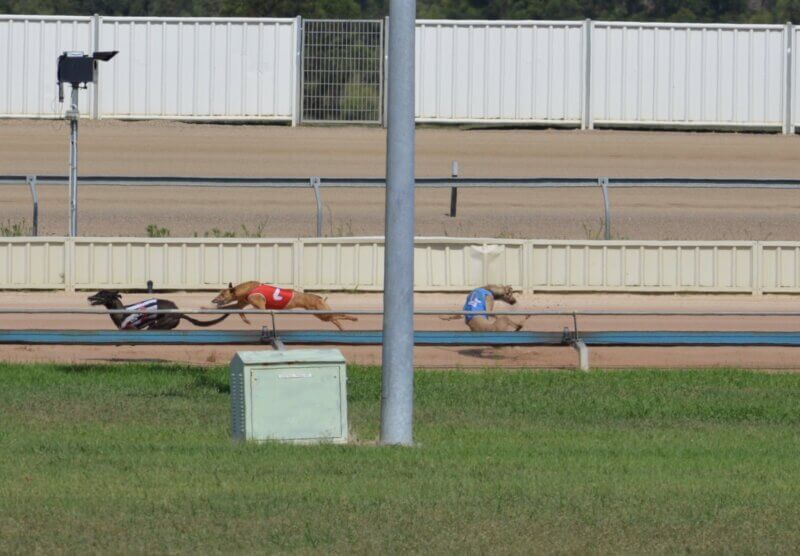
Not a ‘Retirement’ Any of Us Would Choose
As many as 90% of all greyhounds born into the racing industry do not live out their full life expectancies of nine years, instead averaging a mere 1.5-year life span.
Racing “careers” usually end when dogs are between the ages of three and five, at which point they’re considered too slow.
In many cases, “retirement” for greyhounds means only one thing: euthanasia.
Other dogs may be sent to university veterinary schools to be killed for teaching and training purposes, and some end up being part of puppy farm–style breeding programmes. Of course, it is highly irresponsible to breed greyhounds when so many dogs are already languishing in shelters, desperate to find a home.
Even those who are placed into homes carry the physical and psychological trauma of having been used for racing.

Rehoming Schemes Fail
After public outcry, Australian states introduced rehoming schemes (such as the Greyhound Adoption Program (GAP)), and the industry as a whole promised to champion greyhound adoption as opposed to killing.
But the evidence suggests that these programmes have failed.
Despite having a combined budget of over $7 million in the 2020–2021 financial year, industry programmes in both New South Wales and Victoria rehomed fewer dogs than community groups.
In the same period, the national breeding rate was six times the industry’s capacity to rehome dogs through the GAP schemes.
‘Live Baiting’ Cruelty
Other victims of the greyhound-racing industry have historically remained hidden from the public.
Live baiting is a horrendous – and illegal – practice designed to “blood” greyhounds and corrupt their sensitive and placid nature, supposedly giving them the winning edge.
Terrified piglets, rabbits, and native possums are all victims of live baiting – tied to lures, flung around racetracks at breakneck speeds, and then mauled to death. Some animals who survive their first attack are exploited multiple times.
In 2015, Four Corners exposed these atrocities, shocking the nation.
In 2016, a special commission of inquiry into the greyhound-racing industry released its findings and reported that even though this horrific practice is illegal, “a trainer, who admitted to engaging in live baiting, testified that about 10 to 20% of trainers engaged in live baiting”.
In August 2022, a raid was carried out at a property owned by a South Australian trainer accused of live baiting, proving that this is not an issue that can be regulated out of racing.
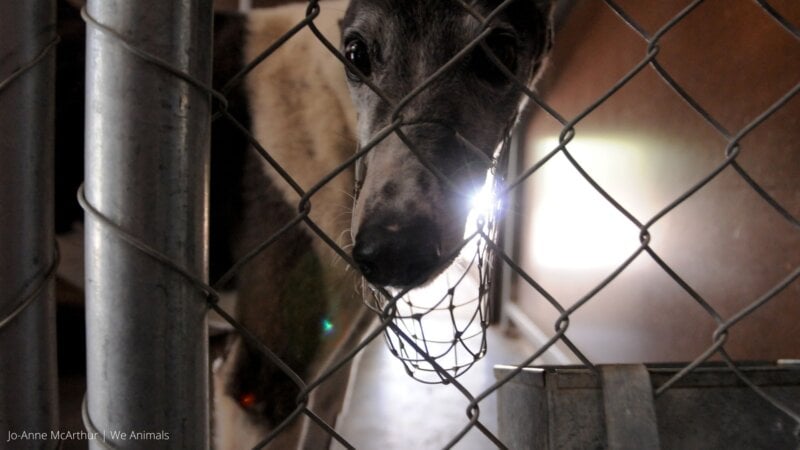
Live Export
In the 2021–2022 financial year, 173 greyhounds were exported from Australia to stimulate international greyhound-racing industries. There is no formal track record of these exports, and the dogs all face uncertain futures.
Dogs are often exported to countries that lack adequate animal-welfare legislation. Export to Macau has been banned since 2013, but it has continued to occur in the years since.
In 2018, Macau’s notorious Canidrome was forcibly closed, and authorities found 533 abandoned and neglected greyhounds – many from Australia. While some were rehomed, others were euthanised. There are often no adoption services for greyhounds in destination countries, and the animals are also at risk of being killed for meat once no longer deemed useful or profitable to the racing industry.
How to Help Greyhounds
Thankfully, the cruelty inherent in greyhound racing has steadily been exposed to the public in recent years.
In 2016, the New South Wales government commissioned an inquiry which concluded that the greyhound-racing industry is incapable of reform. Yet the government continues to throw away tens of millions of dollars on regulation, prize money, and infrastructure.
Please sign our petition calling on the NSW government to finally ban greyhound racing.
You can also give a home to a greyhound who has been discarded by the industry. All you have to do is be prepared for your life to be filled with lots more love as a result!
Animals Are Suffering in Laboratories – Help Save Them Now
